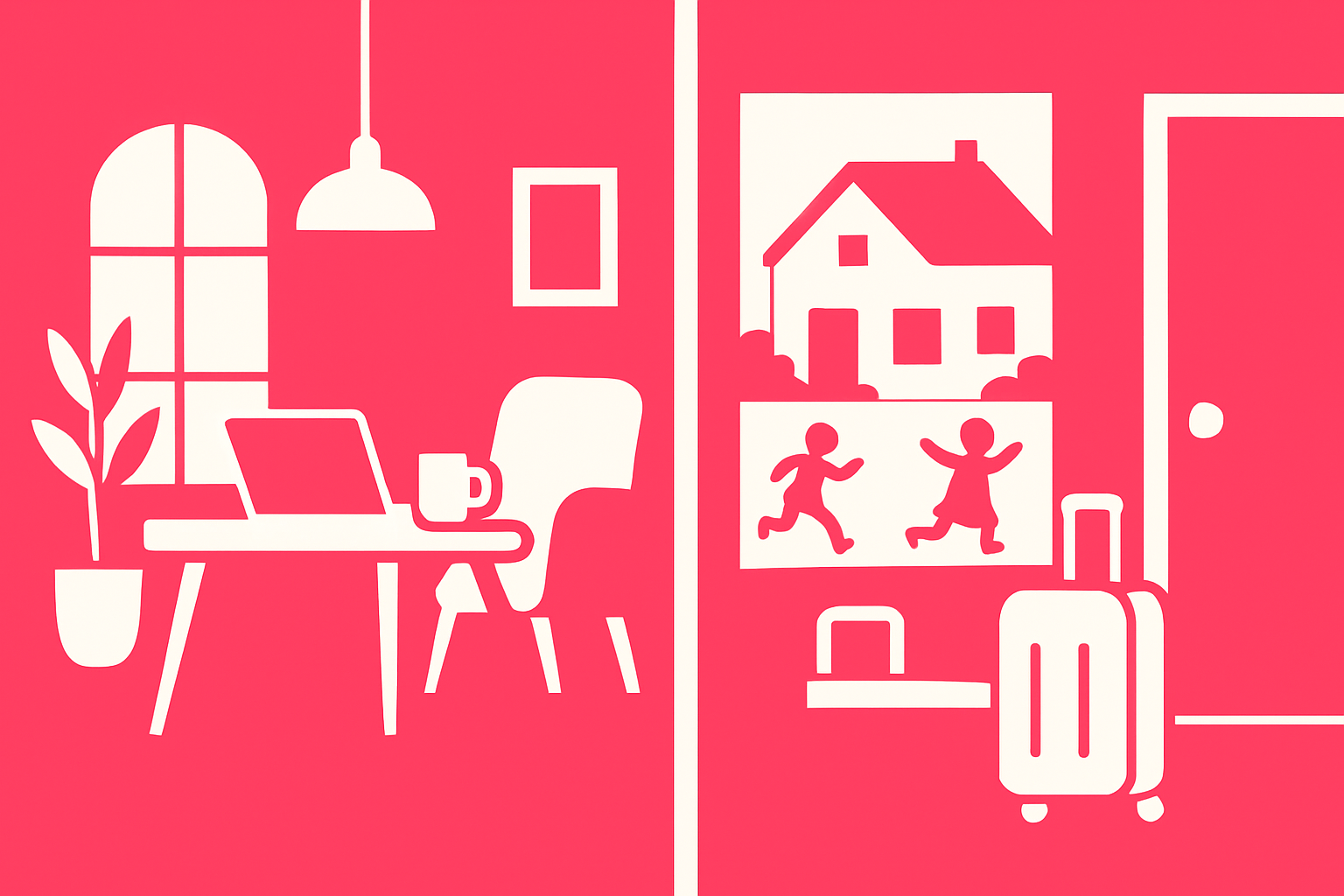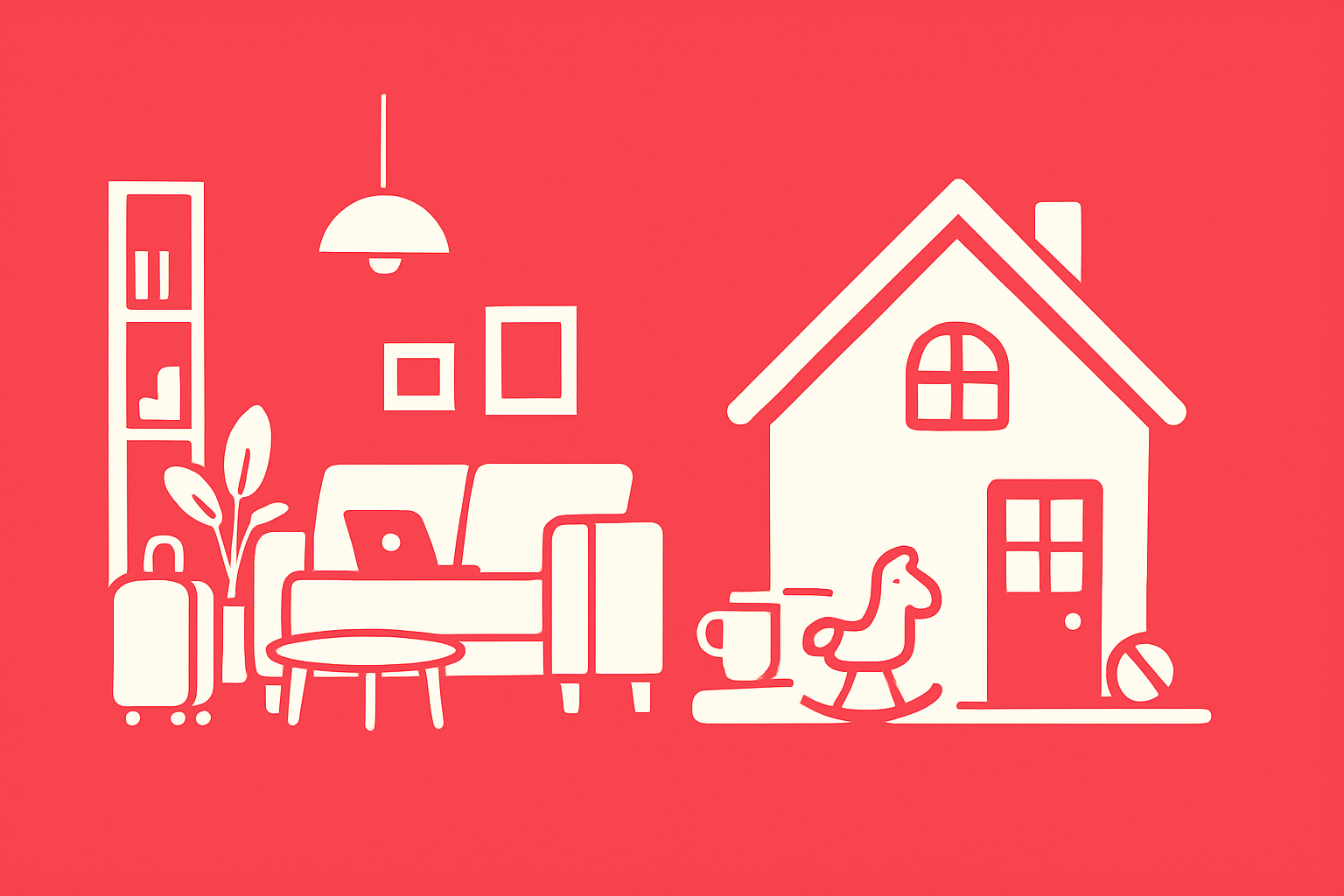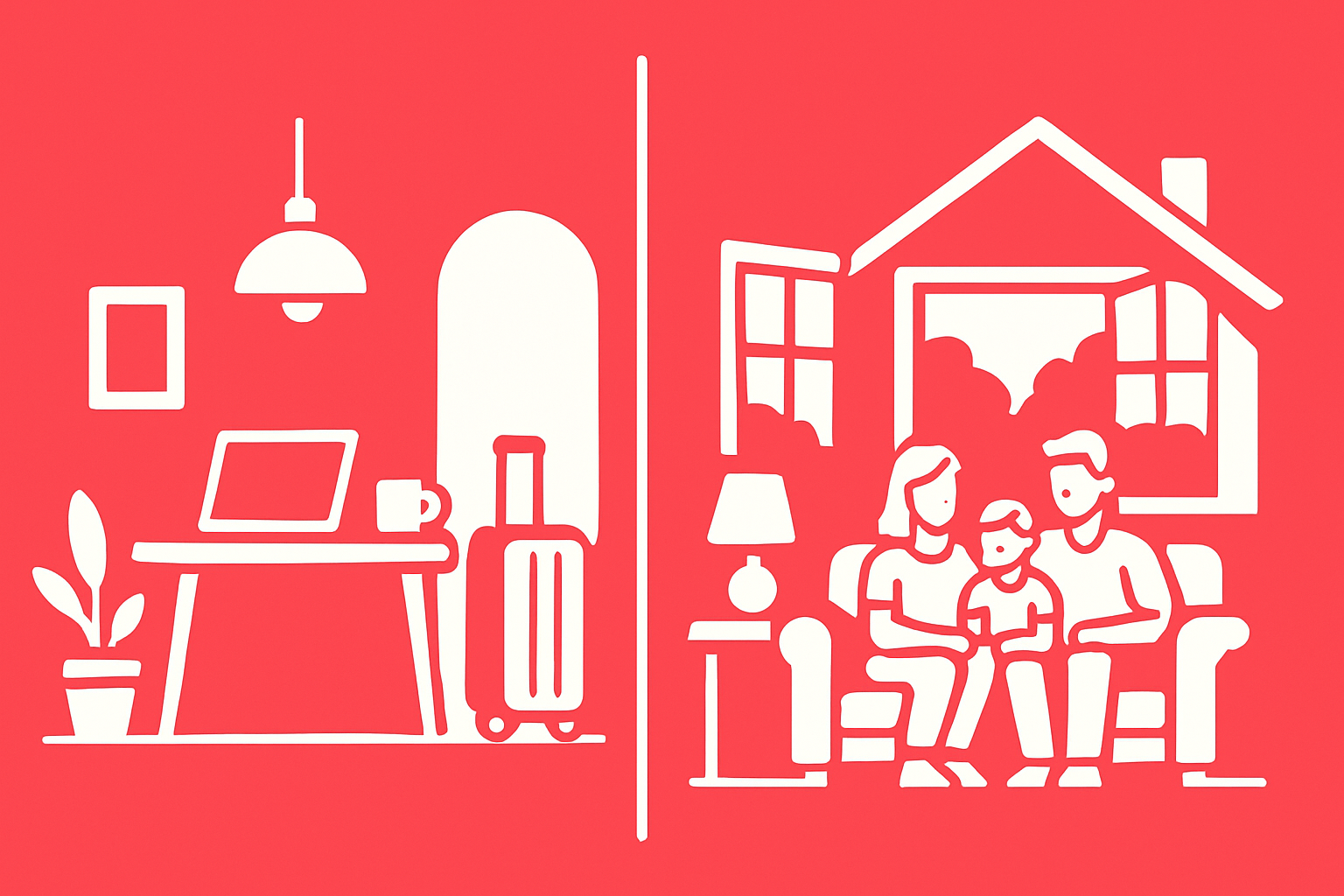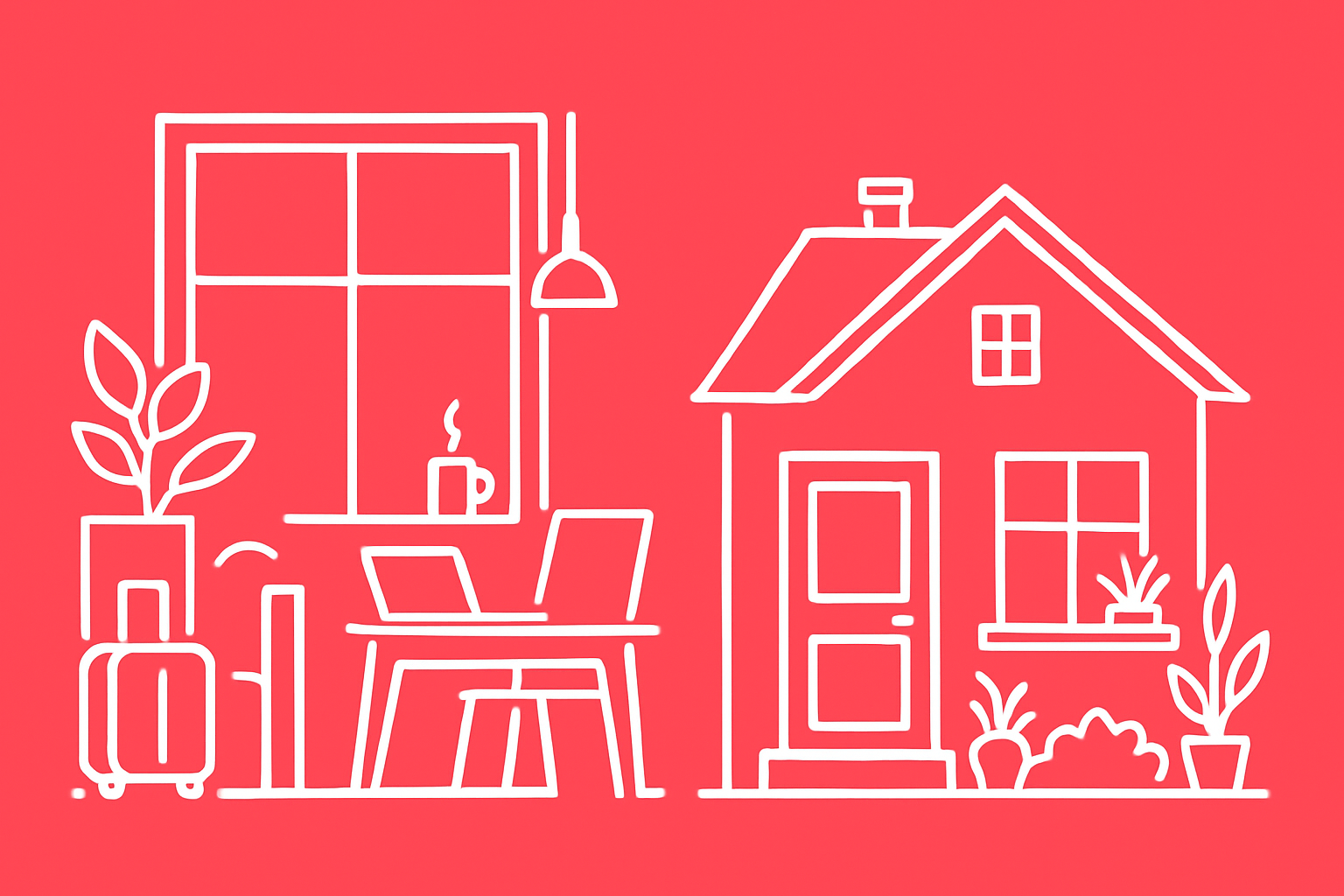|
Getting your Trinity Audio player ready...
|
In 2025, deciding between house apartments and traditional homes has never been more important. With rapid shifts in work habits, lifestyles, and the housing market, many are rethinking what “home” truly means.
Whether you crave flexibility, seek extra comfort, or want to make a smart investment, understanding the differences is crucial. This article dives deep into cost, lifestyle, flexibility, sustainability, and investment prospects, giving you the latest data and real-world examples.
Discover which living option best suits your goals and prepare to make the smartest housing decision for the year ahead.
Defining House Apartments and Traditional Homes
What Are House Apartments?
House apartments are modern residential units within larger buildings, designed for urban living and convenience. These dwellings often feature open layouts, compact kitchens, and shared amenities like gyms or rooftop gardens. Popular examples include high-rise apartment towers in city centers, serviced apartments tailored for business travelers, and multi-family buildings.
Globally, the appeal of house apartments is rising. According to Statista, over 40% of Europeans now reside in apartments, reflecting a shift toward flexible, low-maintenance lifestyles. Singles, couples, and young professionals are especially drawn to house apartments for their vibrant locations and efficient use of space.
What Are Traditional Homes?
Traditional homes refer to standalone houses, either detached or semi-detached, commonly found in suburban or rural neighborhoods. These homes are known for their larger living spaces, private yards, and increased privacy. Owners often enjoy the freedom to personalize both the interior and exterior spaces.
Typically, families and multigenerational households prefer traditional homes. For instance, U.S. Census Bureau data shows that 61.7% of American households live in detached homes. The extra space and autonomy make traditional homes a long-standing favorite for those seeking stability and room to grow.
Key Differences at a Glance
The main differences between house apartments and traditional homes come down to:
| Feature | House Apartments | Traditional Homes |
|---|---|---|
| Ownership Model | Rent or condo | Individual ownership |
| Maintenance | Shared (HOA/condo fees) | Owner responsibility |
| Community vs. Private | Shared amenities | Private spaces |
| Security & Amenities | Secured entry, facilities | Home security systems |
House apartments usually offer communal living with services like cleaning or on-site gyms, while traditional homes focus on private outdoor areas and personal control. Maintenance costs and responsibilities also differ, making the choice significant for many.
Why the Debate Matters in 2025
In 2025, the decision between house apartments and traditional homes is more relevant than ever. The rise of remote work, increasing urbanization, and changing family structures are reshaping what people want from their living spaces. Housing markets are also undergoing rapid changes, with rising prices and supply shortages affecting affordability.
For first-time buyers, renters, and investors, understanding the Housing Market Predictions for 2025 is crucial. Flexibility, cost, and lifestyle needs are driving the debate on whether house apartments or traditional homes offer the best fit in a fast-evolving world.

Cost and Affordability in 2025
Choosing between house apartments and traditional homes in 2025 comes down to more than just sticker price. As housing markets shift and personal priorities evolve, understanding the true cost picture is essential. Let’s break down how each option stacks up from upfront costs to long-term financial planning.

Upfront Costs: Buying and Renting
When comparing upfront costs, house apartments often require less capital than traditional homes. Buyers of apartments typically face lower purchase prices, especially in dense urban markets. For instance, the average price per square foot for house apartments in 2025 remains lower than that of detached homes in most major cities.
Renters also find that security deposits and initial fees for house apartments are generally more manageable. Regional trends show that urban centers favor apartments for affordability, while suburban and rural areas lean toward traditional homes. According to the 2025 Housing Market Outlook, government policies and new tech are shaping both supply and pricing, impacting how buyers and renters approach their decisions.
Ongoing Expenses: Maintenance, Utilities, and Fees
Monthly expenses can vary significantly between house apartments and traditional homes. Apartment residents often pay HOA or condo fees, which cover shared maintenance, security, and amenities. While these fees add a fixed cost, they can simplify budgeting.
Traditional homeowners, on the other hand, are responsible for all maintenance and repairs, which can be unpredictable. Utilities like heating, cooling, and water are typically lower in house apartments due to building efficiencies. Insurance and property taxes also tend to be lower for apartments, helping residents manage ongoing costs more easily.
Value for Money: Space, Amenities, and Services
Evaluating value for money means looking beyond just square footage. House apartments may offer less living space, but they compensate with shared amenities and services.
| Feature | House Apartments | Traditional Homes |
|---|---|---|
| Avg. Size (sq ft) | 800–1,200 | 1,800–2,500 |
| Amenities | Gym, pool, concierge | Private yard, garage |
| Security | Controlled access | Personal systems |
For singles or couples, the convenience of on-site gyms or cleaning services in house apartments can outweigh the need for extra room. Traditional homes offer more space and privacy, but often at a higher cost per square foot.
Investment Potential and Resale Value
Investment prospects differ between house apartments and traditional homes. Apartments in thriving urban locations have seen steady appreciation rates from 2023 to 2025, driven by high demand for flexible living. Rental yields from house apartments are attractive for investors seeking passive income.
Traditional homes, however, often offer more predictable long-term appreciation, especially in stable neighborhoods. Market volatility and risk factors should be considered, as both sectors face unique challenges in the current economic climate.
Financial Flexibility and Long-Term Planning
Flexibility is a key advantage of house apartments for those who may need to relocate or adapt quickly. Lease terms, break clauses, and the ability to sublet make apartments ideal for short-term residents, digital nomads, or frequent movers.
Traditional homes provide opportunities for mortgage refinancing and long-term financial planning, appealing to those seeking stability. Ultimately, house apartments offer more adaptability, while traditional homes cater to those ready for a longer commitment.
Lifestyle, Comfort, and Convenience
Choosing between house apartments and traditional homes in 2025 is about more than just bricks and mortar. It’s a decision that shapes your daily life, from the space you enjoy to the connections you make and the convenience you experience.

Space and Privacy Considerations
Space is a key differentiator between house apartments and traditional homes. In house apartments, open-plan layouts maximize every inch. This suits singles or young professionals who value a streamlined living area.
Traditional homes, by comparison, offer separate rooms and larger footprints. Families often prefer the privacy of detached living, with private yards and dedicated play areas for children.
| Feature | House Apartments | Traditional Homes |
|---|---|---|
| Living Space | Compact/open-plan | Spacious/multi-room |
| Privacy | Shared walls/entrances | Private entrances/yards |
| Outdoor Area | Balconies/shared spaces | Private gardens/yards |
For those who prioritize personal space and quiet, traditional homes have the edge. Yet, house apartments are ideal for those who thrive in vibrant, communal settings.
Amenities and Community Living
One of the biggest draws of house apartments is access to built-in amenities. Residents often enjoy gyms, rooftop lounges, co-working spaces, and secure parking, all under one roof.
Community living is at the heart of many house apartments. Social events, shared spaces, and even pet-friendly areas foster interaction and a sense of belonging. Security features such as gated access and surveillance give added peace of mind.
Traditional homes, meanwhile, offer greater independence but fewer communal perks. While you might have a private yard, you’re responsible for your own security and maintenance.
If you value convenience and a ready-made social network, house apartments offer a lifestyle that fits the bill.
Location and Accessibility
House apartments typically dominate urban landscapes, placing residents close to workplaces, public transport, and entertainment. This central location slashes commute times and boosts walkability scores.
Traditional homes are often found in suburban or rural areas. While they offer more space, daily commutes can be longer, and access to city amenities may be limited.
- House apartments: Steps from cafes, shops, transit hubs
- Traditional homes: Proximity to parks, schools, quiet neighborhoods
For those prioritizing a short commute or city living, house apartments deliver unmatched accessibility.
Flexibility and Mobility
Flexibility is one of the standout advantages of house apartments in 2025. Lease terms are often shorter, with options for subletting or furnished rentals—perfect for digital nomads and professionals on the move. The rise of remote work and evolving Housing Market Trends 2025 have made flexible housing more desirable than ever.
Traditional homes, on the other hand, often require long-term commitments. Selling or renting out a house can be time-consuming, making relocation less convenient.
If your lifestyle demands adaptability and frequent moves, house apartments provide the freedom you need.
Quality of Life: Health, Wellbeing, and Social Factors
Quality of life in house apartments is shaped by thoughtful design and community features. Many complexes offer green rooftops, fitness centers, and shared lounges. These not only support physical health but also encourage social connections.
Urban locations mean easy access to parks, cultural venues, and dining, promoting an active lifestyle. However, noise and air quality can vary.
Traditional homes offer quiet environments, private gardens, and control over your living space. This is ideal for families seeking stability and peace.
Ultimately, house apartments suit those who want convenience and connection, while traditional homes appeal to those valuing tranquility and autonomy.
Sustainability and Environmental Impact
Energy Efficiency and Carbon Footprint
Energy efficiency is top of mind in 2025, especially as more people opt for house apartments in dense urban centers. Shared walls in apartment buildings help reduce heat loss, making temperature control more efficient compared to traditional homes. Centralized heating and cooling systems further lower overall energy use per resident.
Traditional homes, on the other hand, often have better insulation but higher energy consumption due to their larger size and independent systems. Many new homes now incorporate renewable energy options, such as solar panels, to offset their carbon footprint.
The latest EU Energy Performance of Buildings Directive encourages both house apartments and standalone homes to meet strict efficiency standards. This push is leading to greener living spaces for everyone.
Resource Consumption and Waste Management
Resource consumption is another area where house apartments often have the edge. Apartments typically use less water per household, thanks to efficient plumbing and shared infrastructure. Many complexes invest in advanced recycling programs, centralized waste disposal, and even composting initiatives.
Smart home technologies, such as automated thermostats and energy-efficient lighting, are increasingly common in both house apartments and traditional homes. These upgrades help reduce utility bills and environmental impact. According to recent studies, multi-family buildings often outperform single-family homes in resource efficiency.
Sustainable systems and community-wide efforts make it easier for apartment dwellers to reduce their ecological footprint.
Urban Density and Land Use
Urban density plays a major role in environmental sustainability. House apartments allow cities to house more people on less land, reducing urban sprawl and preserving green spaces. This efficient land use supports public transportation, walkability, and vibrant local economies.
Traditional homes, with their larger plots, contribute to suburban expansion and often require more resources for roads and utilities. City planners in 2025 are increasingly prioritizing high-density developments, recognizing the benefits of house apartments for both people and the planet.
As populations grow, maximizing space through apartment living becomes even more crucial for sustainable urban growth.
Eco-Friendly Living Options
Eco-friendly living is now a priority for both buyers and renters. House apartments are often built to achieve green certifications such as LEED or BREEAM, signaling a commitment to sustainable materials and energy use. Features like rooftop solar panels, rainwater harvesting, and community gardens are becoming standard.
Many traditional homes are also being retrofitted with eco-friendly technologies, but house apartments often lead the way in large-scale green initiatives. As highlighted in the 2025 Housing Market Forecast, sustainability is increasingly influencing home values and buyer choices.
Whether you choose an apartment or a house, eco-conscious features can offer long-term savings, healthier living, and a positive impact on the environment.

Security, Safety, and Peace of Mind
Feeling secure at home is a top priority for everyone. In 2025, both house apartments and traditional homes offer unique approaches to safety and peace of mind. Let’s break down the crucial differences so you can make an informed choice.
Security Features and Crime Statistics
House apartments often feature gated entries, digital surveillance, and on-site security personnel, making them attractive for those seeking peace of mind. Many buildings use keycard access, video intercoms, and 24/7 monitoring.
In contrast, traditional homes usually rely on personal security systems, neighborhood watch programs, and physical barriers like fences. According to FBI data, urban apartments tend to have lower burglary rates compared to suburban homes, mainly due to enhanced security layers.
| Feature | House Apartments | Traditional Homes |
|---|---|---|
| Gated Entry | Common | Rare |
| Surveillance Cameras | Standard | Optional |
| Emergency Response Time | Faster (urban) | Varies (location) |
The choice often comes down to your personal preference for shared or independent security measures.
Disaster Preparedness and Building Standards
Building safety standards have evolved rapidly. House apartments are subject to strict regulations for fire safety, earthquake resistance, and emergency evacuation. Features like sprinkler systems, fireproof stairwells, and regular drills are now standard in most new developments.
Traditional homes, on the other hand, may require individual upgrades such as storm shelters, reinforced windows, or flood insurance. Preparedness often depends on the owner’s initiative and local building codes.
House apartments generally benefit from centralized management that ensures compliance with updated safety protocols, while homeowners must stay proactive to maintain disaster readiness.
Health and Hygiene Considerations
Cleanliness protocols became a focal point after recent health crises. House apartments typically offer professional cleaning for shared areas, frequent sanitation of elevators, and touchless entry systems.
Private homes give residents full control over their environment, allowing for customized hygiene routines and pest management. However, they lack the scale and resources of apartment complexes for coordinated responses during outbreaks.
House apartments have adopted features like air purification in lobbies and contactless package delivery, making them appealing for residents who prioritize communal health and safety.
Noise, Privacy, and Personal Safety
Noise and privacy are key factors in daily comfort. House apartments often invest in soundproofing, but shared walls and common corridors can lead to occasional disturbances. Resident surveys highlight satisfaction with modern noise-reduction technologies, though issues can still arise.
Traditional homes offer greater personal space, with privacy fences and private gardens limiting outside intrusion. Advanced home security systems add an extra layer of protection for families.
Ultimately, your preference between house apartments and traditional homes may depend on your tolerance for shared spaces and your desire for solitude.
Choosing the Right Fit: Who Benefits Most?
Finding your ideal home in 2025 depends on your lifestyle, priorities, and long-term goals. Whether you're seeking space for a growing family, flexibility for a fast-paced career, or strong investment returns, both house apartments and traditional homes have unique advantages. Let's explore who benefits most from each option.
Best for Families and Long-Term Settlers
For families, traditional homes often provide the space and stability needed for long-term living. Detached houses usually offer larger yards, multiple bedrooms, and ample privacy for children and pets. Proximity to schools and parks is a major plus, with suburban developments catering to these needs through family-friendly amenities and safe neighborhoods.
However, some modern house apartments are designed with families in mind, featuring playgrounds, secure entrances, and community events. The choice between house apartments and traditional homes comes down to priorities: if you value space, outdoor activities, and a close-knit community, traditional homes may be ideal.
Best for Professionals and Frequent Movers
Professionals, digital nomads, and frequent movers often gravitate toward house apartments for their flexibility and convenience. Short-term leases, furnished units, and on-site amenities like gyms or coworking spaces make transitions easier. Urban locations mean less time commuting and more opportunities for networking or socializing with like-minded residents.
House apartments are especially attractive to those who value hassle-free living and easy relocation. Corporate housing and serviced apartments cater to business travelers, offering streamlined rental processes and support services for a seamless experience.
Best for Investors and Second-Home Buyers
If you're considering real estate as an investment, both house apartments and traditional homes offer different advantages. Urban house apartments often generate strong rental yields due to high demand from young professionals and students. Management is usually simpler, with property management companies handling maintenance and tenant screening.
Traditional homes, especially in growing suburbs or vacation hotspots, can deliver steady appreciation and long-term value. Investors should compare average rental yields in their target area—Zillow's housing data is a helpful resource—to identify the best fit. Ultimately, house apartments may suit those seeking lower maintenance and higher turnover, while homes can appeal to those focused on capital growth.
Future Trends and Evolving Preferences
Looking ahead, demographic changes and technology are shaping housing choices. An aging population, more Gen Z renters, and the rise of remote work are increasing demand for both flexible house apartments and tech-enabled traditional homes. Smart home features and sustainable building practices are becoming the norm, enhancing comfort and efficiency.
In 2025 and beyond, expect a blend of preferences: some will prioritize mobility and digital convenience, while others seek roots and personal space. House apartments and traditional homes will continue evolving to meet these diverse needs, ensuring there's an ideal option for every lifestyle.
Now that you’ve seen the real pros and cons of house apartments versus traditional homes in 2025, it’s time to put your knowledge to work. Whether you’re craving more flexibility for your next work assignment, searching for a hassle-free relocation, or simply want a comfortable place that feels like home, you deserve options that fit your lifestyle and goals. At Guestly Homes, we make it easy to see what’s available—no more endless searching or second-guessing. Ready to find a place that truly works for you?
See Available Homes


